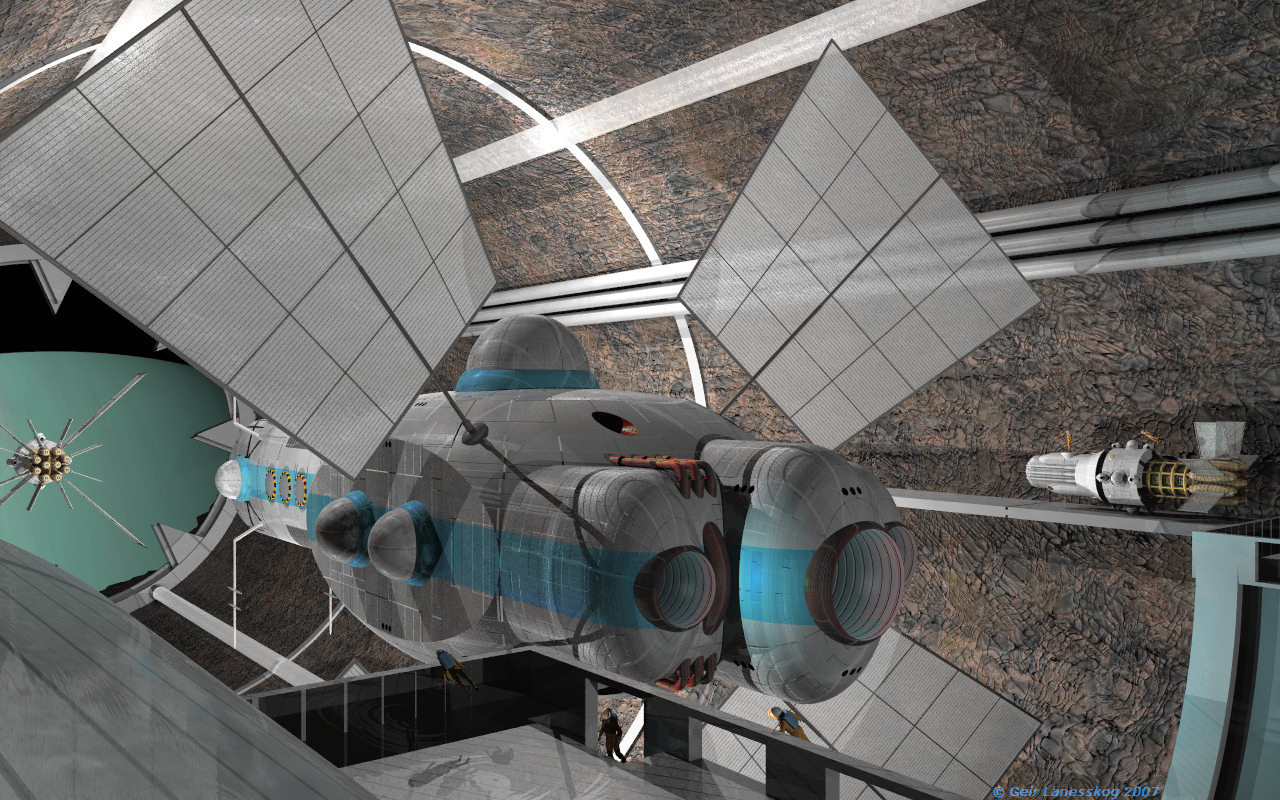
 |
|||||||
|
|
|
|
|
|
|

Leaving Cordelia Base
Most histories of the Mars-Belter War rightly focus on the
struggles in and around the Belt and the commerce raiding that ultimately helped
precipitate the Belters' defeat. The battles at Jupiter, the occupation and
insurgency at Saturn and even the Imperial Navy's Kuiper Raid feature
prominently in most accounts. And the surrender of the Neptune Squadron over
Triton on the day of the armistice serves as a coda to the war and a
counterpoint to the signing of the Peace of Vesta in the most acclaimed war
reference. But what most of these stories mention just in passing, if at all, is
the campaign fought in near isolation near and around Sol's smallest gas giant.
The Uranus Campaign spans more than the length of the war. Fighting continued
until the surrender of V104 Spartacus well over a year beyond the
armistice date. And if a fatal bar brawl in a disputed Titania outpost could be
considered a casus belli, then the war between the Belt and Mars started at
Uranus a week before the Strentor Incident.
Uranus was never heavily populated. At the outset of the war, only forty
thousand people inhabited the planet and its moons. Three quarters of those were
God's Children, mostly living under King's Mountain on Oberon. The Children had
sold their gas mining platforms and the Miranda stations to Hesperia less than a
decade earlier, and that was the basis of the Martian stake in the system.
On Ariel, a few thousand Belters had held out through the worst of the Dark Age,
for more sentimental than economic reasons, but with outer system trade
increasing and demands for deuterium, helium three and xenon rising, Belter
businesses and co-ops had begun to move in, rehabbing the Umbriel camps and
vying with the Martians for control of the otherwise worthless largest moon,
Titania.
With commerce came protection. The Martian Imperial Navy maintained a division
of corvettes and a squadron of fighters at Miranda. The Belters fortified their
Ariel and Umbriel holdings and surreptitiously built patrol bases under craters
on the shepherd moons of Cordelia and Ophelia.
On the day after Strentor, two Belter Vigilance class patrol cruisers and
a flight of Marauders destroyed the Martian's Uranian gas platforms and raided
Miranda. For the next nine years, with little resupply and no relief, a handful
of light warships and gunships, along with commandeered freighters and shuttles
and miners drafted or shanghaied into irregular units, fought in a cold
forgotten struggle.
--Excerpt from the forward of The Forgotten Campaign: War at Uranus,
Larrisa Mellon Lupi, Selene ePress, 2540.
All pages and images ©1999 - 2007
by Geir Lanesskog, All Rights Reserved
Usage Policy
![]()